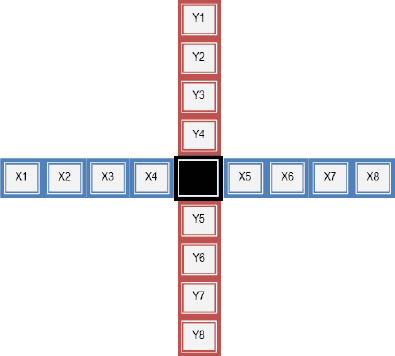当前你的浏览器版本过低,网站已在兼容模式下运行,兼容模式仅提供最小功能支持,网站样式可能显示不正常。
请尽快升级浏览器以体验网站在线编辑、在线运行等功能。
3139:Balancing the Scale
题目描述
You are given a strange scale (see the figure below), and you are wondering how to balance this scale. After several attempts, you have discovered the way to balance it — you need to put different numbers on different squares while satisfying the following two equations:
| x1 * 4 | + | x2 * 3 | + | x3 * 2 | + | x4 | = | x5 | + | x6 * 2 | + | x7 * 3 | + | x8 * 4 |
| y1 * 4 | + | y2 * 3 | + | y3 * 2 | + | y4 | = | y5 | + | y6 * 2 | + | y7 * 3 | + | y8 * 4 |
How many ways can you balance this strange scale with the given numbers?

输入解释
There are multiple test cases in the input file. Each test case consists of 16 distinct numbers in the range [1, 1024] on one separate line. You are allowed to use each number only once.
A line with one single integer 0 indicates the end of input and should not be processed by your program.
输出解释
For each test case, if it is possible to balance the scale in question, output one number, the number of different ways to balance this scale, in the format as indicated in the sample output. Rotations and reversals of the same arrangement should be counted only once.
输入样例
87 33 98 83 67 97 44 72 91 78 46 49 64 59 85 88 0
输出样例
Case 1: 15227223
最后修改于 2020-10-29T06:54:02+00:00 由爬虫自动更新
共提交 0 次
通过率 --%
| 时间上限 | 内存上限 |
| 1000 | 65536 |